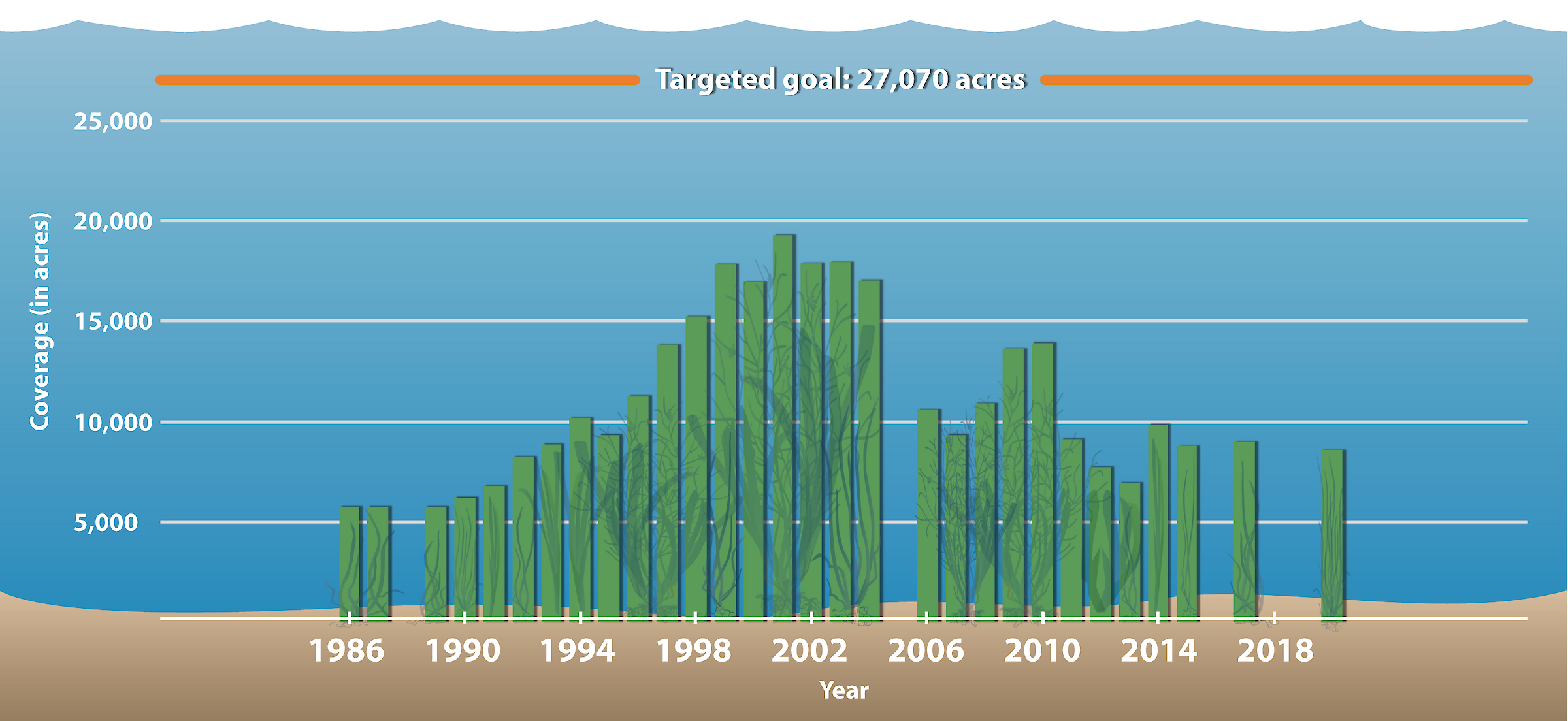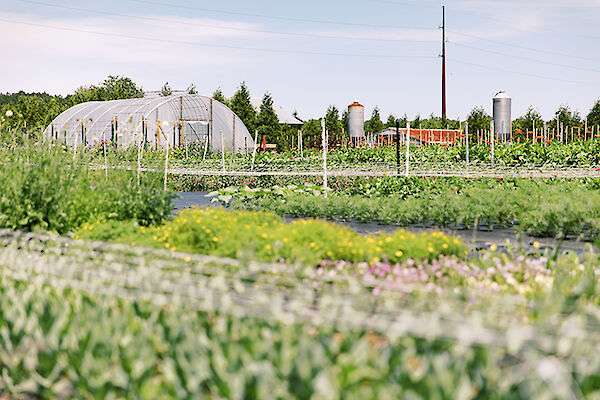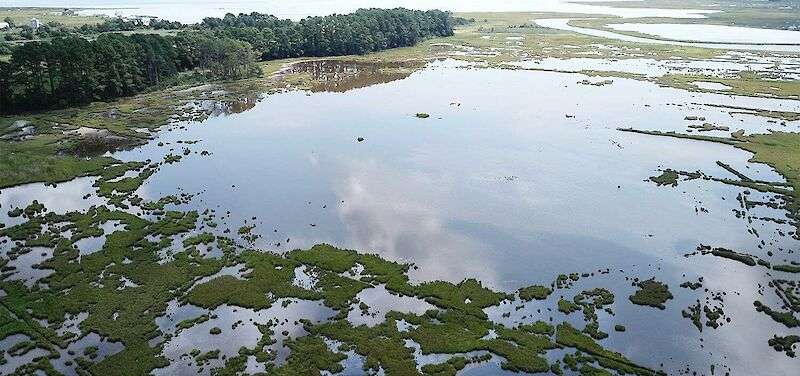Seagrass coverage continues to struggle
Seagrass coverage is currently at only one third of the targeted abundance. Seagrass (also known as submerged aquatic vegetation (SAV)) declined in 2005 and 2011 due to elevated water temperatures. Seagrasses are an indicator species because they are sensitive to human disturbances. Seagrass in the bays adjacent Ocean City disappeared in 2014 and was replaced by a variety of seaweeds. Many stressors affect SAV, including cloudy water, nutrient overloading, water temperature, and physical disturbance.

Living Local project fosters agriculture education

Made possible through an Environmental Protection Agency grant, MCBP, along with our trusted local partners, launched a new agricultural education project. The project goal is to foster a greater appreciation of farming through the education of students, educators, and community members about best management practices local farmers implement to protect our watershed’s natural resources.
The Coastal Bays face continuing challenges

Challenges facing the Coastal Bays are common to many coastal areas. How these challenges are met have long lasting impacts. Consistent monitoring is necessary to determine the success of restoration projects and how conditions are changing within the watershed, but funding this activity is a challenge every year. Climate change and associated impacts present another challenge. Sea level rise, shoreline erosion, island and marsh loss, and rising temperatures, particularly high summer water temperatures, continue to damage seagrasses. Additionally, the area remains vulnerable to increasing extreme weather events. To address these challenges, continued resilience planning and implementation, and emphasis on renewable energy, need to continue on local and national levels.
